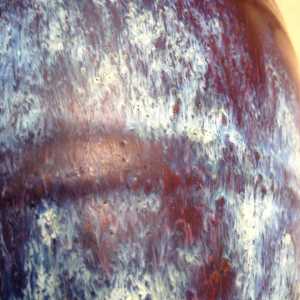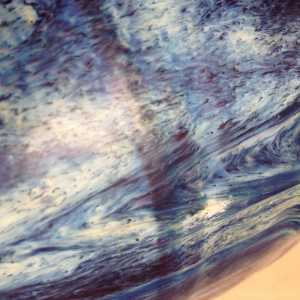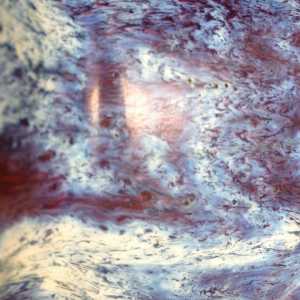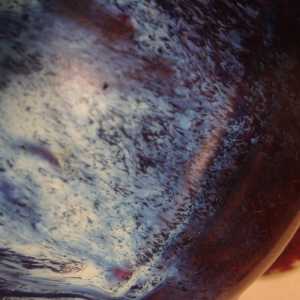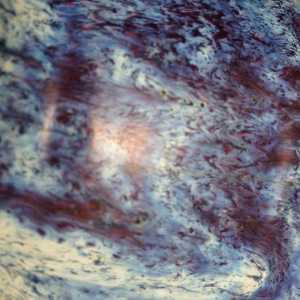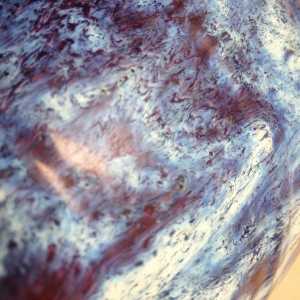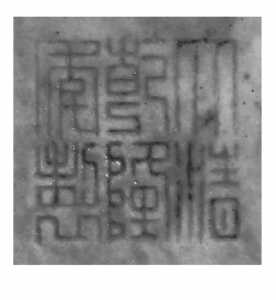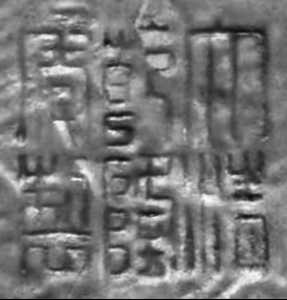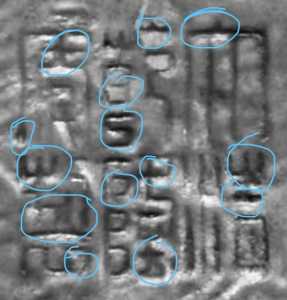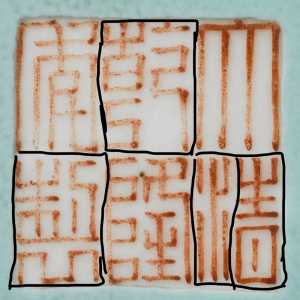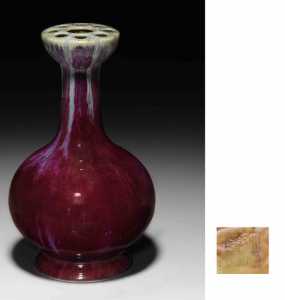The Chinese and Asian Art Forum. For Fans, Collectors and Dealers.
 Basic Rules For the BidAmount Asian Art Forum: Talk about whatever you want. You can even discuss and offer things that are for sale if they are authentic. Maximum image file size per post is 2 MB. Images of 700pxl x 700pxl are optimal if saved at a medium resolution. Be respectful of others and enjoy yourself. Click the YouTube link for a brief tutorial on using the forum. You can also EMBED Videos by cutting and pasting from You-Tube, Vimeo etc.
Basic Rules For the BidAmount Asian Art Forum: Talk about whatever you want. You can even discuss and offer things that are for sale if they are authentic. Maximum image file size per post is 2 MB. Images of 700pxl x 700pxl are optimal if saved at a medium resolution. Be respectful of others and enjoy yourself. Click the YouTube link for a brief tutorial on using the forum. You can also EMBED Videos by cutting and pasting from You-Tube, Vimeo etc.
NOTE: To post an item or add a new post, click open the category title from the FORUM LIST, and CLICK the Blue ADD TOPIC button.
@johnshoe Yes it's strange, the ones that have been cut seem to sell for a premium thou? some of the most expensive flambe vases on christie's and sotherby's have had the glaze cut
https://www.sothebys.com/en/auctions/ecatalogue/2019/important-chinese-art-hk0864/lot.3653.html
The overflow problem is specific to copper red glazes as they evolved through the 18th century into the 19th century. My bowl has the Kangxi Langyao glaze type that typically have white rims on the top due not enough copper left in the glaze due to the suspended copper particles sliding down the sides of the object during firing.
According to Nigel Wood in “Chinese Glazes”, in the mid 18th century they started experimenting with these copper red glazes by adding significant amounts of lead to the formula. “The results of these experiments were extraordinary glossy flambé blues and reds that showed signs of liquid-liquid phase separation during cooling. Their curdled surfaces also suggest strong boiling and bubbling of the glazes that might have occurred at high temperatures…These flambé glazes often became so fluid at high temperature that their bases needed extensive grinding after firing, where the molten glazes had overrun their feet.”
@william thanks William, that's useful to know. Here are some shots of bubbles, which would be attributed to the high temperature, although I suspect this would be this case for a modern vase also. However I have cleaned the vase and many of the bubble holes appear dirty still, so have some age..
I assume since you paid for the vase in pounds that you live in England? Like Giovanni, I suspect the vase is 19th century and that you got it for a good price. Congratulations! You could spend a few more pounds and take it to London and put it in the hands of someone from the Chinese department at Christie’s or Sotheby’s. Don’t sent send a picture, an expert needs to ‘handle’ it.
Dear John,
I didn’t know that it was a say. As for the running of glazes, not all have the same fluidity and tendence to run. These especially have, as rightly explained by William. It also depends from the period. These glazes of the 19th century are more running.
For example, the early Jun glazes of Song and Jin periods are less fluid than the Yuan and Ming ones.
Dear William, I share each of your words.
Dear Tom, you provided once more example, if necessary, of how the big auction houses are not always reliable, and these days most often wrong. The old, real experts, ahs gone. The young ones are only experts in a detail, which is provenance.
Look at the last vase that you have shown, from Sotheby’s. The glaze has been clearly filed (grounded, milled, whatever, don’t know the correct English word for that), nevertheless they say that the glaze is “thinning to pale sky-blue along the rim and STOPPING NEATLY around the unglazed footring”!! They need a pair of glasses, if they can’t see the difference. Or simply they do not know.
Here I am posting the pictures of the glaze “stopping neatly”, as it should, near the footrim of my 18th century Langyao baluster vase, and a picture of the same glaze, same vase, where it has been filed at the neck because it was damaged. You see that, despite the glaze is pooling toward the foot due to the low viscosity, in the 18th century they were anyway able to let it thinning just at that point. This has not been possible one century later, mainly because of the less viscous glaze.
Giovanni
@clayandbrush Do many of those 18th C examples have similar amounts of pitting marks like yours, and do they differ in this way from 19th C examples?
I wanted to share some clarity on Imperial I feel it’s being used a little loosely. For a piece to be Imperial it was items used specifically for the court. These pieces are of the highest standard. No auction house creates this standard the Royal kiln did. So I have to look at the standard of that time from documents museums and very experienced curators. Because a piece was fired in a Imperial kiln doesn’t make it so. Gifts and private orders also trade was potted in the kiln. But still not Imperial. I disagree with not looking at the mark of a piece . The mark is a necessity in labeling a piece as imperial. Qainlong emperor was methodic when assessing pieces for the court. No piece would ever enter the Royal court with a mark that is written wrong or carelessly. Your piece is probably 19th century as stated I still think later or even very earlier 20th. Either way a nice example and anyone would be grateful to own. But auction houses past sales don’t make a piece Imperial only the court did everything else is a reference or a clue to unproven history. I have looked at your mark under software there are areas when the tracing of the mark are still visible and corrections where made after the mark was first applied. The flow from up to down is not fluid I counted a dozen mistakes. Don’t take this as I’m beating up on your piece. But as a collector the term imperial to me must alway be scrutinized only the data with facts and providence can give us a opinion if it could be Imperial. But I would never use other sales defects bad pictures to justify a piece as being Imperial. Here is a Imperial mark of a Imperial piece as yours and your mark and your mark with errors and corrections. Using the negative software helps to clean up the mark to see it more clearly.
Dear John,
based on the items that I have handled, I should answer “yes” to your question, but can’t affirm that for sure not having seen many. In general, I think yes. Those are burst bubbles.
About the mark, I mean literally what I said, I never look at the mark. It is obvious that, if what I have in hands has all the features of being an imperial piece, then it is ok to look at the mark, but it is just a further confirmation to the conclusion already reached. What I meant is that it is not, never, the mark that make an item Imperial nor of the period. What I also meant is that it is a nonsense looking at the mark in search of an indication of authenticity if the rest has not been convincing. If an item is not totally convincing, looking at the mark is useless. Will the mark authenticate an item with a wrong paste, or glaze, or shape, or painting style? Absolutely not!
Regards
Giovanni
@clayandbrush I have a follow up question about the marks. If everything is right about a piece as you listed, paste, shape, etc., and then you look at the mark and it is not consistent with the standard for marks of that time, would you consider it mark and period or not? And do such examples exist, or does this not ever happen?
@johnshoe It's very confusing for me because Christies, sotherby's etc sell "imprtial" vases all the time with incomplete, badly rendered qianlong seals, as we've already established. Does that mean the big auction houses are selling fake imperial vases for 6 or 7 figures on a regular basis. It doesn't make sense to me. Here are two examples from Alain Truong, both with quite different marks with different mistakes:
http://www.alaintruong.com/archives/2018/09/11/36696150.html
http://www.alaintruong.com/archives/2019/11/22/37809480.html
one sold for over a million the other half a million...
Thanks Brian @lotusblack to make the mark readable. About Chinese seals/ marks/ stamps is not about ink, because the ink can make some part short and some part stronger. Mainly you are looking at characters, which need fit in a square box, then balance out. Like this qianlong seal (got it from above-Alain. R. Truong). In the limited space, 6 characters divided into 6 boxes, each box has the same space, (hardly has 7 characters in the history, modern seals you can do anything). Each character fits inside its own box, then can be separated to left and right or top and bottom, or simply fill in its own square (e.g. "DA -大- big the top right)- The characters are square looking in official seals. Only from the point view of the mark, this vase's writing is NOT well balanced (yinyang), just too sloppy to be a qianlong. Hope it helps.
Welcome to the forum, Thomas. I hope you stay around awhile. There are some very smart and experienced people here, and it's a great place to learn.
You might be misunderstanding the use of the word "imperial". The landscape vase you posted above was described as "mark and period" but I didn't see where Christie's described it as "imperial". Either way, very few mark and period pieces are imperial. Brian @lotusblack gave a great explanation of what the term really means.
It's true that marks should be looked at last. Unless everything you look at first (shape, glaze, paste, foot, enamels etc.) is reasonably correct, then the mark simply cannot prove authenticity. If the foot is wrong, it doesn't matter what the mark looks like. If the glaze is wrong, the mark can't fix that.
As suggested by others, this vase is not imperial. The sloppy glaze on the inside, or the splotchy, unbalanced colors outside... neither would have been allowed within 500 miles of the emperor. (I mean no offense to your vase, just showing a little respect for Qianlong's exquisite taste.)
And it's true that they filed the over-run glaze from reds/flambes in the 19th century, but they also did it in the 20th century. They're still doing it today. The lesson here is the same as with marks: No single thing can ever prove something is of the period, it can only disprove it. To prove something is of the period, you need all the things to be correct.
Oh sorry if I missed it, but did you ever answer @julia 's question?
Do you mean it feels dry to the touch, or that it is actually affecting your skin after you have touched it?
Anyway, I really do hope you don't get discouraged! It's really a fun hobby but you need to spend slowly at first.
@craig Yes Craig, I think I'll stick around, it is very useful for learning. The glaze doesn't effect my skin, it just seems to absorb the moisture (sweat) from my skin and the porcelain is dryer after touching it strangely, I wonder if it has something to do with the lead they used..? As far as the quality of the Flambe glazing is concerned I really think it's subjective. It's a matter of personal taste. I;m quite surprised by some of the period pieces that have sold at major auction houses for 6 figures and in my "biased" opinion (as it is my vase we are talking about) I prefer it to the examples in the links below (all period sealed). I also think it's technically better, the way the glaze works around the rings and mask is much more delicate, revealing the subtle layers of the glaze. It also looks more 3 dimensional, as if it is much more like a waterfall, falling over a ridge, it seems to come out of the vase. There has simulated movement in two directions, a cascade down, seems to splash up again turing into a more static finish with less movement with a slow transition into the static "white blotches" which read as turing from mist from the waterfall into clouds. This transition from violent movement to stasis is very hard to produce, the feeling of movement in two directions, very difficult, considering it was fired in an upright position. The variety and subtleness of the glazes around the rings, also revealing the pocelain, very difficult. As I say it's a matter of opinion and taste. But look at these examples and you will see what I mean. The second one in Alain Truong link, is pretty technically poor, a simple dribble of wonky glaze at the top with vague patches of light blue here and there, the garlic mouth example speaks for itself, it is a poor attempt, but was one of the most expensive flambe vases sold. The butterfly vase, to me, is technically inferior to the vase I have (sold for more than 300K)
This is just my opinion, I'm not saying this makes it a period vase, I'm just saying, how good it is, is a matter of opinion. It would be interesting to know other opinions on the vases in these link and pictures below, compared to the one I have. Maybe I'm just blinded by my bias.
http://www.alaintruong.com/archives/2018/10/02/36753369.html
https://en.thevalue.com/articles/tokyo-chuo-auction-2017-autumn-sale-sept-porcelain-live
Thanks for visiting "The BidAmount Asian Art Forum | Chinese Art"
If you sell on eBay, or have a shop feel free to post images and descriptions and links.
Check back often for discussion about the latest news in the Chinese art and antique world. Also find out about the latest Asian art auctions at Sotheby's, Christie's, Bonhams and Tajans.
Auction results for: fine porcelain, ceramics, bronze, jade, textiles and scholar's objects. As well as Japanese, Thai, Vietnamese and other Asian cultures.
Thank you,
Peter Combs
Topics and categories on The BidAmount Asian Art Forum | Chinese Art
Kangxi vases, Kangxi dishes and chargers, Kangxi ritual pieces, Kangxi scholar's objects, Qianlong famille rose, Qianlong enamels, Qianlong period paintings, Qianlong Emporer's court, Fine porcelain of the Yongzheng period. Chinese imperial art, Ming porcelain including Jiajing, Wanli, Xuande, Chenghua as well as Ming jades and bronzes.
The BidAmount Asian Art Forum | Chinese Art
A free Asian art discussion board and Asian art message board for dealers and collectors of art and antiques from China, Japan, Korea, Thailand, Cambodia, Vietnam and the rest of Asia. Linked to all of the BidAmount Asian art reference areas, with videos from plcombs Asian Art and Bidamount on YouTube. Sign up also for the weekly BidAmount newsletter and catalogs of active eBay listing of Chinese porcelain, bronze, jades, robes, and paintings.
The art of calligraphy - and for the ancient Chinese it certainly was an art - aimed to demonstrate superior control and skill using brush and ink. Calligraphy established itself as one of the major Chinese art forms during the Han dynasty (206 BCE - 220 CE), and for two millennia after, all educated men were expected to be proficient at it.
The Museum’s collections of Asian art span nearly five millennia and encompass the cultures of China, the Himalayas, India, Japan, Korea, and Southeast Asia. In 2007, the Museum launched an initiative to create dedicated galleries for the collection, beginning with a gallery for the arts of Korea ...
Chinese art is full of symbolism, in that artists typically seek to depict some aspect of a totality of which they are intuitively aware.
China Online Museum is the finest online museum of Chinese art. It features Chinese calligraphy, painting, ceramics, bronzes, carving, and other artworks.
Chinese Ceramics & Works of Art. Overview Upcoming auctions Contacts Auction results ... Christie’s sales of Chinese ceramics and works of art showcase centuries of Chinese history. Held throughout the year in London, New York, Paris and Hong Kong, they attract a wide audience of collectors and connoisseurs vying for pieces as diverse as ...
Explore Asian Art Week. Contact the Specialist Department. Chinese Paintings ... Senior Specialist, Head of Sale. [email protected]. Tel:+1 212 641 5760. Bid in-person or online for the upcoming auction:Fine Chinese Paintings on 10 September 2019 at New York. Bid in-person or online for the upcoming auction:Fine Chinese Paintings on 10 ...
Discover an abundance of must-see art from all corners of a vast continent at Christie’s NY Asian Art Week. From contemporary classical and Chinese paintings to works with exemplary provenance from the Art Institute of Chicago, our Rockefeller Paza galleries will be full of ancient treasures and contemporary masterworks in a salute to the vibrant arts of Asia.
Sold to benefit The Art Institute of Chicago’s Asian Art Acquisition Fund, the sale features 84 lots with a focus on Ming and Qing porcelains, and offers a rare insight into the taste for collecting Chinese ceramics and works of art in the Midwest from the end of the 19th century through the 1980s. Highlights include two Wanli wucai garlic-head vases, a Qianlong mark and period, blue and ...
Specialist, Chinese Paintings, Christie's London Dr Malcolm McNeill is a Specialist in Chinese Paintings at Christie’s, based in London. He previously worked as an assistant curator of the Chinese collections and the Victoria and Albert Museum in London, as a researcher at the British Museum, and as a translator and tour guide at the National Palace Museum in Taipei.
The Christie's Education 2020 Conference: The Chinese Art Market 18 Jun 2019 Christie’s Education is delighted to announce our first international academic conference in Asia which will take place in Hong Kong from 26-27 November 2020 at the Hong Kong Convention and Exhibition Centre and will run in parallel with Christie’s Hong Kong Autumn Auctions.
The summer Chinese Art sale in Hong Kong will feature works of art from several private collections, including Qing porcelains and textile from the collection of the legendary Chinese art dealer A. W. Bahr (1877–1959), fine gilt bronze Buddhist sculptures from an old Hong Kong collection, an East Asian collection of Qing dynasty wine cups and jades, and a Japanese collection of Song ceramics ...
Sotheby's Chinese Works of Art Department holds two auctions each year in London, New York, Hong Kong and Paris.
Chinese Art - View Auction details, bid, buy and collect the various artworks at Sothebys Art Auction House.
With more than 340 Chinese works of art dating from the Neolithic to the Republic periods, highlights of this sale include a selection of Qing Imperial monochromes from the collection of Arnold and Blema Steinberg, early ceramics from the Art Institute of Chicago and Chinese porcelain and works of art from the collection of Henry Arnhold.
Results: Sotheby's Asia Week achieved $52.4 million in six strong auctions, exceeding pre-sale estimates. With 76.5% of lots sold and 60.3% of lots surpassing high estimates, the Asian art sales at Sotheby's indicate continued collector interest in the finest works of art from China, India and and the Himalayas.
Today's sale of Important Chinese Art will proceed as planned with sessions at 10 AM and 2 PM EDT. Sotheby's will be monitoring the weather conditions throughout the day and will be available to coordinate alternative bidding options should conditions make it difficult for clients to attend the auction in person.
Bonhams Chinese Art department is renowned for offering the finest works of art representing the richness and breadth of China's artistic heritage, particularly Imperial porcelain, white and spinach green jades, cloisonné and Buddhist art. Specialised international auctions are held globally, including London, Hong Kong and San Francisco.
Bonhams : Chinese Works of Art We use cookies to remember choices you make on functionality and personal features to enhance your experience to our site. By continuing to use our site you consent to the use of cookies. Please refer to our privacy and cookie policies for more information.
Bonhams Fine Art Auctioneers & Valuers: auctioneers of art, pictures, collectables and motor cars. We use cookies to remember choices you make on functionality and personal features to enhance your experience to our site. By continuing to use our site you consent to the use of cookies. ... Chinese Art (US) General enquiries
Bonhams : Fine Chinese Art We use cookies to remember choices you make on functionality and personal features to enhance your experience to our site. By continuing to use our site you consent to the use of cookies. Please refer to our privacy and cookie policies for more information.
Bonhams Fine Art Auctioneers & Valuers: auctioneers of art, pictures, collectables and motor cars Bonhams : Asian Art We use cookies to remember choices you make on functionality and personal features to enhance your experience to our site.
Bonhams are international auctioneers of fine Chinese and Japanese art. We specialise in rare Imperial and Export Chinese ceramics and works of art, as well as Japanese ceramics, fine and decorative works of art from the Neolithic Period to the 20th century. View on map
Bonhams Fine Art Auctioneers & Valuers: auctioneers of art, pictures, collectables and motor cars. We use cookies to remember choices you make on functionality and personal features to enhance your experience to our site. By continuing to use our site you consent to the use of cookies. ... Asian Art Bonhams. Work. 22 Queen St.
